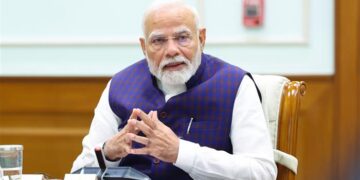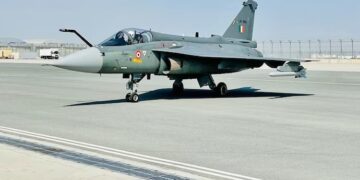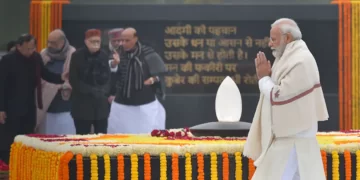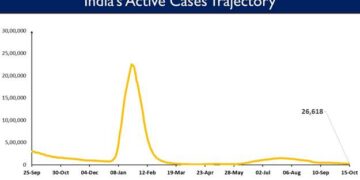Prime Minister Narendra Modi inaugurated the Udhampur-Srinagar-Baramulla Rail Link (USBRL) during his visit to Jammu and Kashmir on Friday, June 6.
Railway stations throughout the Kashmir valley have been decked for the event, and Prime Minister Narendra Modi has kicked off the first Katra-Srinagar Vande Bharat Express, the first train to connect the Valley directly with the rest of India.
Prior to the event, security measures were intensified throughout the region, particularly in Katra’s Reasi district and Ramban, where security personnel conducted vehicle checks with dog squads. Udhampur Railway Station has also been placed on high alert.
The 272-kilometer train route, built at a cost of ₹43,780 crore, traverses tough terrain in the Himalayas.
According to a PIB release, the project features 36 main tunnels covering nearly 120 km, eight escape tunnels, and 943 bridges that span rivers, gorges, and mountain passes.
Eight key achievements of Udhampur-Srinagar-Baramulla Rail Link:
- Chenab bridge: The world’s highest railway arch bridge, standing 359 metres above the riverbed—35 metres taller than the Eiffel Tower. According to an official release, the bridge spans 1.3 km and can withstand winds of up to 260 km/h. It cost ₹1,486 crore and is designed to last 120 years. With its completion, the travel time between Katra and Srinagar will come down to about three hours.
- Anji Khad bridge: India’s first cable-stayed railway bridge, located 80 km from Jammu. It stands 331 metres above the riverbed and stretches 725 metres. The structure uses 96 high-tensile cables and was completed in just 11 months. Over 8,200 metric tonnes of steel were used.
- Tunnel T-50: India’s longest transportation tunnel, at 12.77 km, between Khari and Sumber.
- Tunnel T-80 (Pir Panjal tunnel): The second-longest transportation tunnel in India, 11.22 km long, between Banihal and Qazigund.
- Tunnel T-44: The third-longest railway tunnel in the country, measuring 11.13 km, between Sawalkote and Sangaldan.
- Massive tunnel network: The entire project includes 36 main tunnels and eight escape tunnels, covering a combined length of over 186 km.
- All-weather connectivity: With the addition of ice-cutters on the Vande Bharat trains, the line is built to function throughout the year, even in snowy conditions. The train will provide a major improvement over road transport which often shuts down during harsh winters.
- Use of advanced engineering techniques: The Himalayan Tunneling Method and advanced software like ‘Tekla’ were used to design and construct the structures to withstand seismic activity, heavy snowfall, and landslides.
Udhampur-Srinagar-Baramulla rail link
The USBRL project took more than three decades to complete. According to an official news release, the concept of a rail link connecting the Kashmir Valley to the rest of India was first proposed in the 1970s. It was officially approved in 1994, and building began in 2002 after the Atal Bihari Vajpayee government allocated cash for land acquisition.
On Thursday, Chief Minister Omar Abdullah of Jammu and Kashmir and Union Minister Jitendra Singh visited the Katra station to examine preparations. “If I say that I have been waiting for this day for a long time, it won’t be an exaggeration,” Abdullah told the crowd. “This project began while I was at school, possibly in grade 7 or 8. Today, my children have finished their studies and are working.
Railway Minister Ashwini Vaishnaw characterized the project as a watershed moment for Jammu and Kashmir’s unification with the rest of India. “This will improve trade, tourism, and mobility,” the ministry stated.
Meanwhile, the Vande Bharat Express will run between Katra and Srinagar, greatly cutting travel time and providing a safer and more comfortable alternative to road or air travel, particularly during the winter, when the Srinagar-Jammu route is frequently closed. The project seeks to alleviate Kashmir’s seasonal transit isolation and expensive airfares.
Source: HT







 Finance
Finance







